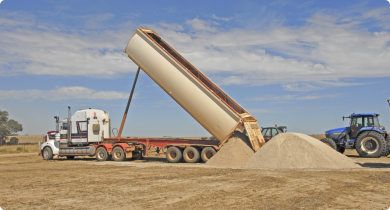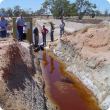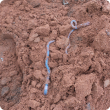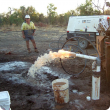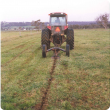Soils
Western Australia’s agriculture sector needs access to quality soil that can sustain long-term productivity and growth. The department is leading the way in developing management practices to maximise soil productivity and minimise land degradation. The department also provides technical information on managing soil constraints, including acidity, water repellence, subsoil compaction, erosion along with nutrient management. We also support agriculture through soil and land condition monitoring, condition assessment and providing management strategies and tools to improve soil condition.
Filter by search
Filter by topic
- Managing soils (148) Apply Managing soils filter
- Crops (114) Apply Crops filter
- Soil constraints (98) Apply Soil constraints filter
- Grains (64) Apply Grains filter
- Soil salinity (45) Apply Soil salinity filter
- Water (35) Apply Water filter
- Land use (35) Apply Land use filter
- Production & postharvest (32) Apply Production & postharvest filter
- Resource assessment (31) Apply Resource assessment filter
- Measuring and assessing soils (30) Apply Measuring and assessing soils filter
- Soil management (29) Apply Soil management filter
- Soil acidity (25) Apply Soil acidity filter
- Pastures (24) Apply Pastures filter
- Waterlogging (23) Apply Waterlogging filter
- Water management (22) Apply Water management filter
- Grains research & development (21) Apply Grains research & development filter
- Soil nutrients (20) Apply Soil nutrients filter
- Water repellence (16) Apply Water repellence filter
- Livestock & animals (15) Apply Livestock & animals filter
- Wheat (14) Apply Wheat filter
- Soil compaction (12) Apply Soil compaction filter
- Climate & weather (12) Apply Climate & weather filter
- Liming (12) Apply Liming filter
- Water erosion (11) Apply Water erosion filter
- Rangelands (10) Apply Rangelands filter
- Livestock management (9) Apply Livestock management filter
- Identifying WA soils (8) Apply Identifying WA soils filter
- Canola (8) Apply Canola filter
- Pasture management (7) Apply Pasture management filter
- Soil carbon (7) Apply Soil carbon filter
- Lupins (7) Apply Lupins filter
- Wind erosion (7) Apply Wind erosion filter
- Horticulture (7) Apply Horticulture filter
- Assessment for agricultural expansion (7) Apply Assessment for agricultural expansion filter
- Barley (7) Apply Barley filter
- High rainfall pastures (7) Apply High rainfall pastures filter
- Pulses (6) Apply Pulses filter
- Land use planning (6) Apply Land use planning filter
- Managing dryland salinity (6) Apply Managing dryland salinity filter
- Climate change (6) Apply Climate change filter
- Dispersive and sodic soils (6) Apply Dispersive and sodic soils filter
- Plant nutrition (5) Apply Plant nutrition filter
- Pests, weeds & diseases (4) Apply Pests, weeds & diseases filter
- Pasture species (4) Apply Pasture species filter
- Report card on conditions and trends (4) Apply Report card on conditions and trends filter
- Fire (4) Apply Fire filter
- Field peas (4) Apply Field peas filter
- Irrigated crops (4) Apply Irrigated crops filter

